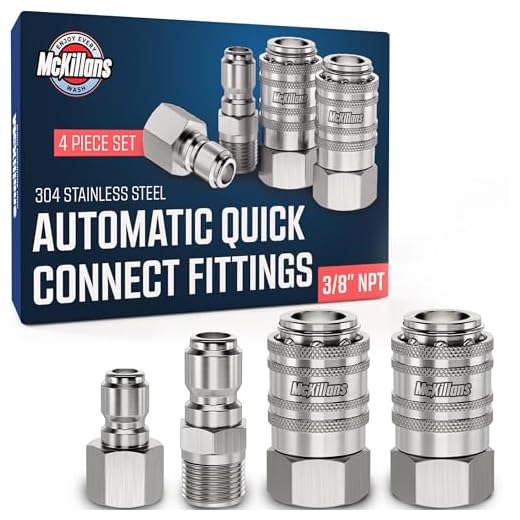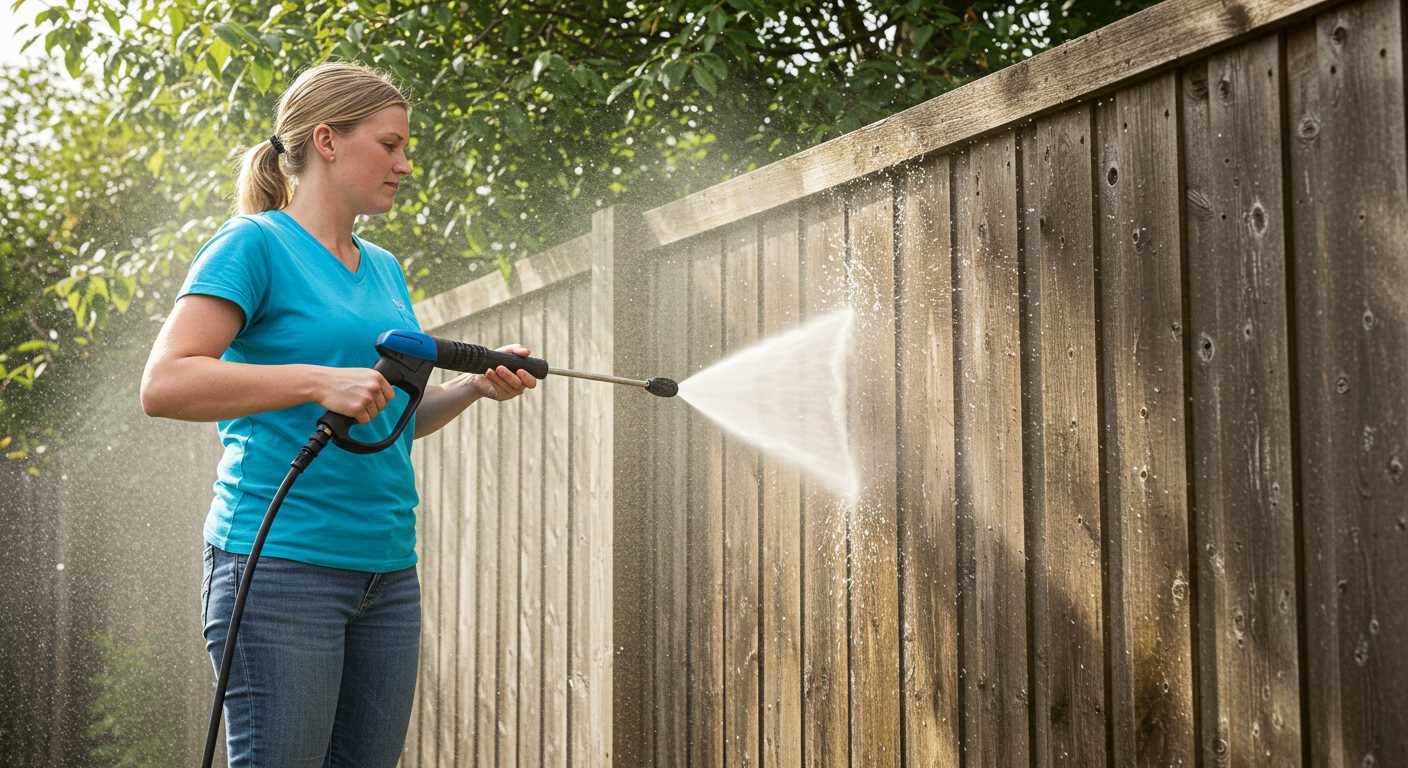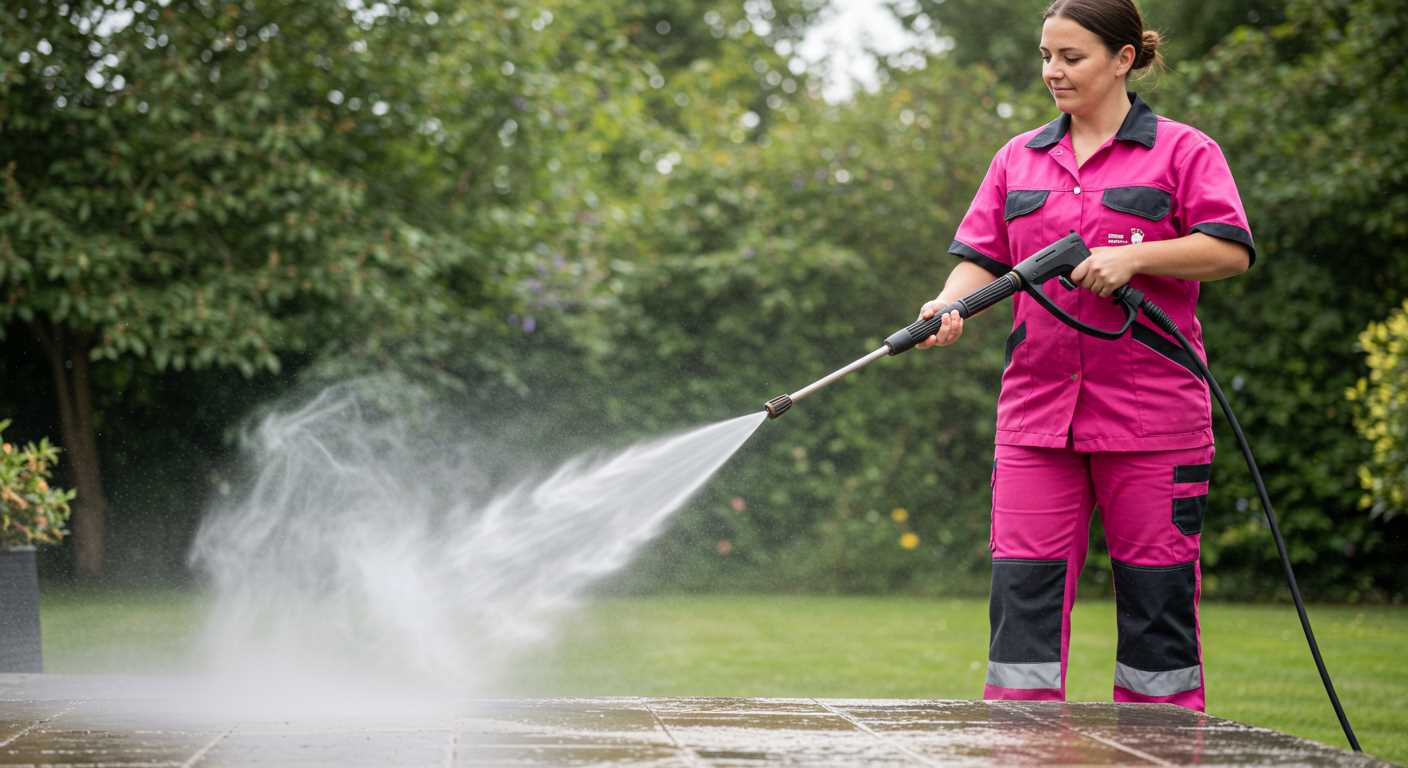



Position a flexible tubing attachment at the rear–this is where you’ll connect the water supply. Make sure you have a secure fit to prevent any leaks. Next, the high-pressure line should be connected to the front outlet of the equipment for maximum efficiency in water flow.
Before activating your machine, inspect all connections for tightness. A little drop of water can indicate an improper fit, leading to reduced performance. For optimal operation, ensure that the nozzle is properly attached to the end of the high-pressure line to achieve specific results in cleaning tasks.
For storage, always detach components to avoid wear and tear. Coiling the flexible tubing properly will prolong its lifespan. Familiarise yourself with the labels on connections to streamline your setup and maintenance processes.
Connecting the Water Supply
The water supply line should be attached to the designated inlet located on the device, generally found at the front or side. This connection ensures a steady flow necessary for optimum performance.
Accessing the Connection Points
It’s crucial to identify the inlet point, as models may vary. Referencing the user manual is advisable to ensure you find the correct location quickly. Check for any caps or filters that might need removal before attaching your supply line.
Avoiding Common Mistakes
Ensure the connection is tight yet not overtightened, which can lead to leaks. Avoid using incompatible attachments that might hinder performance or cause damage. Regularly checking these connections can prevent unnecessary wear and increase longevity.
Fluid Dynamics

For efficient operation, ensure the water is flowing at adequate pressure, typically around 40-70 PSI. Using a garden hose with a minimum diameter of ¾ inch enhances water flow, significantly impacting the cleaning results.
Table: Connection Specifications
| Aspect | Recommended Value |
|---|---|
| Inlet Diameter | ¾ inch minimum |
| Water Supply Pressure | 40-70 PSI |
| Hose Length | Up to 100 feet maximum |
Maintenance Tips
After use, detach the supply line to prevent any residual water from causing blockages or corrosion. Regularly inspect for kinks or damage in the supply line to ensure a seamless cleaning experience. Keeping the inlet clean will also enhance functionality.
Identifying the Hose Connections on Your Pressure Washer
.jpg)
First, locate the water inlet connection. This is typically found at the front or rear of the unit and is designed for a standard garden tap hose. Make sure it’s securely attached to prevent leaks.
Next, identify the high-pressure outlet. This is usually a quick-connect fitting on the gun or wand, allowing for easy attachment of your spray nozzle or lance. Ensure it is tightly connected, as a loose fitting can lead to significant performance issues.
Key Steps for Proper Connection
- Inspect all connections for cleanliness. Debris can obstruct flow.
- Use the correct fittings designed for your specific model to avoid compatibility issues.
- Regularly check for wear and tear on seals and gaskets to maintain optimal function.
Troubleshooting Tips
If you experience low pressure or flow issues:
- Examine the inlet hose for kinks or blockages.
- Verify that the high-pressure connection is properly secured.
- Check the water source for adequate pressure.
Proper identification and connection of components ensure a smooth and effective cleaning process. Taking a moment to inspect these connections can save time and enhance performance. Proper upkeep will lead to longer equipment life and better results in your cleaning tasks.
How to Attach the High-Pressure Hose Securely
Align the connection point of your cleaning machine with the adapter of your high-pressure line. Push the connector in firmly until you hear or feel a click, indicating a secure fit. Always ensure that the coupling and threads are clean to prevent any leaks or damage. If you encounter resistance, double-check that no debris is obstructing the connection.
Once attached, give the connector a gentle tug to confirm stability. Do not force it. After securing the connection, follow by tightening the locking mechanism, if present. This adds an extra layer of assurance that your setup will remain intact during operation.
Before turning on the unit, inspect the attachment for any signs of wear or deterioration. Look for cracks or kinks along the line. If any issues are evident, replace the component as needed. A thorough check can prevent operational failures and ensure a smooth cleaning session.
Finally, after use, detach the line carefully, taking care not to yank on it. Store the equipment in a dry, protected area to prolong its lifespan and maintain functionality.
Understanding the Different Hose Types for Various Models
Choosing the right tubing for your cleaning device is crucial for optimal performance. Each unit has specific requirements for diameter, length, and material. Here’s what I’ve learned over the years.
Common Types of Hoses
- High-Pressure Tubing: Typically ranges from ¼ inch to ½ inch in diameter. It’s designed to withstand intense water forces, often made from reinforced rubber or thermoplastic.
- Standard Garden Hoses: Usually ¾ inch in diameter, these are not suited for high-pressure tasks but can be used to supply water to the machine from a tap.
- Extension Hoses: Available in various lengths, these allow greater reach and flexibility. Ensure they’re compatible with your model’s fittings.
Choosing the Right Fit
Compatibility is key. Always refer to the manufacturer’s specifications for your specific unit to avoid issues. Pay attention to:
- Connector Types: Quick-connect fittings are common. Check whether your connections match.
- Length Requirements: Longer tubes may reduce water intensity; consider the balance between reach and force.
- Material Durability: If using on rough surfaces or in extreme environments, opt for heavy-duty materials.
In summary, selecting the appropriate tubing improves functionality and extends your unit’s lifespan. Always prioritise quality and fit for the best results.
Connecting the Water Supply Pipe
To connect the water supply pipe, locate the inlet on the unit, typically situated at the rear or side. Ensure the connection point is clean and free from debris. I recommend using a standard garden hose with a diameter of 3/4 inches, as this size assures optimal flow rates.
Secure the water supply by twisting the threaded connection clockwise until tight. Avoid over-tightening, as this can damage the threads. Verify the integrity of the connection by checking for leaks before use.
Always use a hose rated for outdoor use, capable of withstanding the water pressure supplied by your source. If you suspect low water flow or pressure, check for kinks or blockages along the hose.
For models requiring a specific water flow or pressure, refer to the manufacturer’s guidelines. Adhering to these specifications ensures proper operation and prolongs the lifespan of your equipment.
Checking for Leaks After Hose Installation

Before using your cleaning unit, it’s essential to inspect each connection for any signs of leaks. Start the system and keep an eye on areas where tubing links to either the machine or the spray gun. A small leak can lead to significant pressure loss and compromised performance.
Visual Inspection
Look for any drips or moisture around the joints. If you spot any wet areas, tighten the fittings gently using a wrench. Be cautious not to overtighten, as this can damage the threading. If leaks persist, consider replacing worn washers or seals.
Pressure Test
Once visually checked, perform a quick operational test. Activate the unit for about a minute and observe the connections during this time. If you hear unusual hissing sounds, this could indicate escaping liquid, signalling a need for further inspection or repair.
Common Mistakes When Connecting Hoses to Pressure Washers
Ensure you are connecting the right attachment to avoid leaks or pressure loss. A typical error involves mixing up high-pressure and water supply connections. This can lead to serious performance issues.
Neglecting to check for compatibility is another frequent oversight. Always confirm that the fittings match the specifications of your cleaning unit. Using incorrect connectors may result in damage or reduced effectiveness.
Forgetting to tighten connections securely is a common mistake that can be easily rectified. Hand-tightening often is not enough; utilise tools if necessary to achieve a secure fit and prevent accidental disconnections during use.
Another issue arises from inadequate inspection of seals and O-rings. Over time, these components may wear out, causing leaks and loss of water pressure. Regularly checking and replacing these items can save you from unwanted surprises.
Ignoring the manufacturer’s instructions is a frequent blunder. Each model may have specific requirements, so always refer to the guidelines to ensure proper connection and functionality.
Be wary of using damaged or worn out lines. Signs of wear can lead to leaks, ineffective cleaning, and potential hazards. Replace any compromised sections immediately to maintain a safe and functional setup.
Lastly, neglecting to test the connections before starting can lead to delayed or ineffective cleaning sessions. Always run a quick check for leaks or pressure inconsistencies prior to commencing your task.
Maintenance Tips for Your Pressure Washer Hoses
Regularly inspect your high-pressure line for abrasions or cuts. Even minor damage can lead to serious leaks. Replace any compromised sections immediately.
Always rinse your water supply tube after each use to prevent debris accumulation. This simple step extends the hose’s longevity and maintains optimal water flow.
Store your tubing in a cool, dry place away from direct sunlight. Prolonged exposure to UV rays can weaken materials, leading to premature deterioration.
Utilise brackets or hooks to hang your lines instead of coiling them tightly. This practice avoids kinks and twists, preserving the internal structure and preventing blockages.
Check fittings and connectors periodically. Tighten any loose connections to avoid leaks and ensure a solid, reliable attachment during operation.
Clean the nozzles and spray tips regularly. Clogged tips force the motor to work harder, which can cause stress on the entire assembly, including your tubing.
Consider using a protective sleeve for your high-pressure line if you regularly use it on rough surfaces. This additional layer guards against abrasions and enhances durability.
Before winter storage, purge any remaining water from the lines. Freezing can cause serious damage, leading to costly repairs in the spring.








